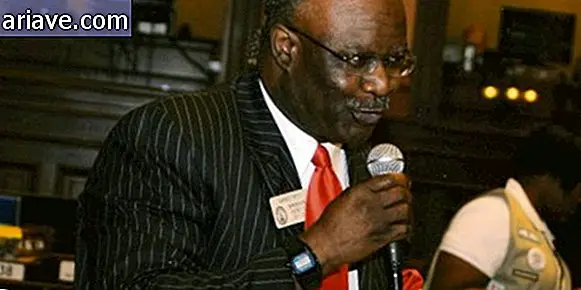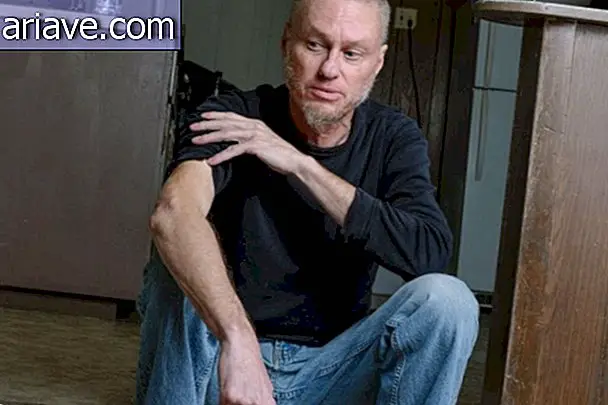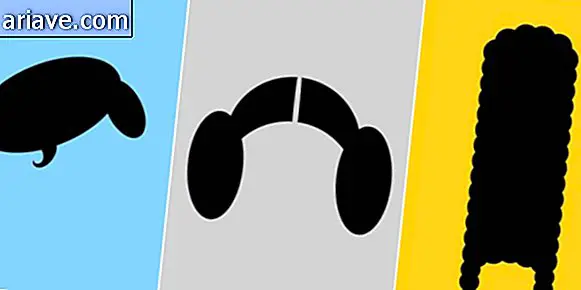The beauty of operatic voices
It is common to hear the term “tenor” associated with the proficiency of a particular singer - it is almost always an interpreter of the most varied operas or songs called “erudite”. This is quite understandable given the superstar status granted to names like Luciano Pavarotti, Plácido Domingo and José Carreras.
However, despite what popular usage may indicate, it is rather a category used to identify a group of similar voices under certain conventions. In this case, “tenor” refers to the sharpest male vocal within the modal register. And there are at least two more large groups there: the “baritones” in the middle portion of the vocal spectrum; and the “bass”, covering the lower tones (and really quite cavernous in some cases).
The division follows the same logic for female vocals, albeit with its own nomenclature. In the case of women, the “soprano” voice covers the most acute portions of the musical spectrum, leaving the “mezzo-soprano” with the intermediate sector and, finally, the “contralto” voice with the most serious regions.

However, there are several subclassifications between these points. There are, in fact, subcategories so precise that they practically refer to the work of a single composer. And, like everything else in life, there are also those cases that happily escape the exclusivity of any labels - such as the controversial castrati of a few centuries ago. It is worth a closer look, as reader Alan Rodrigues suggested.
Inaccurate classification
First of all, it is clear that divisions are only an approximation for classifying voice types. The most commonly used classification for classical music in general possibly has quite pragmatic roots. After all, the pieces are usually designed by the composer to come to life in specific types of voice - which can be quite complicated for unusual or even rare types.
However, such a division should not be taken as isolated compartments. In fact, it is quite common for some interpreters to belong to several categories or subcategories simultaneously. Additionally, an artist's voice can change considerably over the years, causing characteristics of his voice to change - sometimes resulting in a complete change of category.

As The National Opera Center website reinforces, "In the end, what really matters is which repertoire is best for a particular singer and what is most comfortable in his voice."
Male voices
Tenor
The term “tenor” is used to identify the loudest voices in the male spectrum. A tenor can still be:
Leggero : Found in operas by Handel, Rossini and in various compositions of the eighteenth and nineteenth centuries. His agile, high-pitched voice is often used to play the plot hero. A good example of legger tenor is Juan Diego Florez.
Lyricist: Tenors with lighter, clearer voices, with voices usually chosen to bring romantic protagonists to life. Very common in Mozart plays, for example. A good example of lyric tenor is Roberto Alagna.
Spinto / Dramatic: Like the spinto / dramatic soprano, tenors in this category have the full-bodied voices normally associated with 19th-century Italian opera. They usually play impulsive and, of course, also tragic heroes. Jonas Kaufmann is a good example of a spinto / dramatic tenor.
Heldentenor: This is a category that even covers the specific needs of Richard Wagner's operas. He is, after all, a “heroic tenor” - whose role usually reflects a hero of epic proportions. Lauriz Melchior is a good example of a heldentenor tenor.
Comprimario: A tenor specializing in comic roles. They are usually singers with exceptional scenic abilities, yet are able to considerably alter their voice to bring many different characters to life. Michel Sénéchal is a good example of a tenor of the day.
Counterpart: This is the sharpest register among male voices. A countertenor is usually a tenor or baritone who specializes in the higher frequencies, developing a range similar to that of mezzo-sopran women (below). Originally, the co-singers sang Renaissance or Baroque songs composed for the castrati (below) - although today there are pieces developed specifically for this vocal type. Christophe Dumaux is a good example of a countertenor.
Baritone
The term "baritone" is used to identify the voices of an intermediate sector of the male spectrum. A baritone can also be:
Baritone-Martin: Higher and brighter voice baritones, mostly associated with Claude Debussy's French music. The post can also be occupied by tenors with enhanced bass voices. Pierre Bernac is a good example of a baritone-Martin.
Lyricist: Baritones with softer voices, closely associated with Mozart operas. Roles can be both serious and comic. Sir Thomas Allen is a good example of a lyric baritone.
Verdi: Verdi baritones are named after the operas of Italian composer Giuseppe Verdi - in which they often play villains. With powerful voices, these baritones can share space more easily with a full orchestra. Ettore Bastianini is a good example of a Verdi baritone.
Low-Baritone: This is a singer whose record has characteristics of the "baritone" and "bass" types - although, depending on the case, there may be predominance of one of the types. A typical low-baritone role is that of Baron Vitellio Scarpia of Puccini's opera “Tosca”. Ruggero Raimondi is a good example of a low baritone.
Low
The term “bass” is used to identify the lowest voices in the male spectrum. A bass can still be:
Lyric: The most common type of bass, usually associated with Italian pieces. With voices usually a little louder, the roles intended for lyric bass are often occupied by bass-baritones as well. Among the most typical role choices are elderly men, parents, kings, priests, and figures who should reveal wisdom and authority. Ferruccio Furlanetto is a good example of a lyrical bass.
Buffo: As the National Opera Center website puts it, low buffo refers more to a role than a vocal type. Typically, it's a bass style found in comic Italian operas - associated with characters on the “wrong” side of jokes and jokes. John Del Carlo in "The Barber of Seville" (Rossini) is a good example of a low buffo.
Deep: Bass with great vocal power, although their tones are not usually identified as particularly beautiful. The roles intended for this type range from dramatic to comic. Kurt Moll is a good example of a deep bass.
Female voices
Soprano
The term “soprano” is used to identify the loudest voices in the female spectrum. A soprano can also be:
Soubrette: In a very bright voice, sopranos soubrettes usually play young women, sometimes naive but invariably full of life. As the website mentioned, the type is usually identified as “ina / Etta roles” because of the many classic characters that end with these Suficos (Zerlina, Gianetta, Serpina, Nanetta). Kathleen Battle is a good example of a soubrette.
Lyric: The most common type of soprano, intended for various roles - passionate women, countesses, middle-class women, etc. The vocal style is usually “heavier” than the soubrettes. Kiri Te Kanawa is a good example of a lyric soprano.
Spinto: A subtype often associated with Puccini and Verdi operas - as well as other 19th-century Italian composers. They are more powerful voices with great “dramatic color”. Galina Vishnevskaya is a good example of a Spinto soprano.
Dramatic: The broadest of soprano voices, the dramatic soprano is commonly associated with the operas of Richard Wagner and Richard Strauss. “These voices should be heard along with great orchestras and are the ones that take the most time to develop, ” says the text from The National Opera Center. Birgit Nilsson is a good example of a dramatic soprano.
Mezzo-soprano
The term "mezzo-soprano" is used to identify the voices of an intermediate sector of the female spectrum. A mezzo-soprano can also be:
Lyric: they are the brightest and most acute vocal mezzos, even occupying the roles of sopranos in some cases. They also play boys and young men, usually with matching clothing. Lyrical mezzos have flexible voices and a great vocal range. Alice Coote is a good example of a lyric mezzo-sorane.
Dramatic: mezzos with wide voices and color similar to that of the dramatic soprano. They usually play mature and / or seductive women or villains. Although rarely appearing in baroque or classical operas, dramatic mezzo voices have gained wide application since the 19th century. Giulietta Simionato is a good example of a dramatic mezzo-soprano.
Contralto
The term “contralto” is used to identify the lowest voices in the female spectrum. It is a complex record, having severe texture but competing with the sopranos at the highest points of the spectrum. Controls usually play mature women in 19th-century operas, as do men and women in Handel's operas. Ewa Podles is a good example and a contralto.
The castrati
A castrate is a voice similar to that of a soprano, mezzo-soprano, or contralto, although it is produced by a man. This type was produced by the castration of the singers before they reached puberty, so that the hormonal action was eventually reduced - although in some cases endocrinological problems naturally limited the singer's maturation.
The castration of preteens greatly diminished in the late eighteenth century, becoming illegal in Italy in 1870. Only a single engraving of a castrate has been preserved to this day. In the video below, Alessandro Moreschi plays “Ave Maria” on record from 1902 - so that the poor quality must be reworked, of course. Moreschi is regarded as the "Last of the castrati ".
Although Moreschi's castration may have occurred in accordance with the practice of preserving the voice of talented young singers, some say the act was due to a congenital inguinal hernia - for which it was still believed at the time that castration would be the most appropriate method.
It is worth stressing, however, that the voice of castrati differs from that obtained by male vocals through the technique known as "falsetto" - in which the tone produced is above the natural region of the singer, being produced by muscles of the larynx. A castrate was, indeed, a singer whose vocal cords did not mature, so that his tone was naturally sharper.











